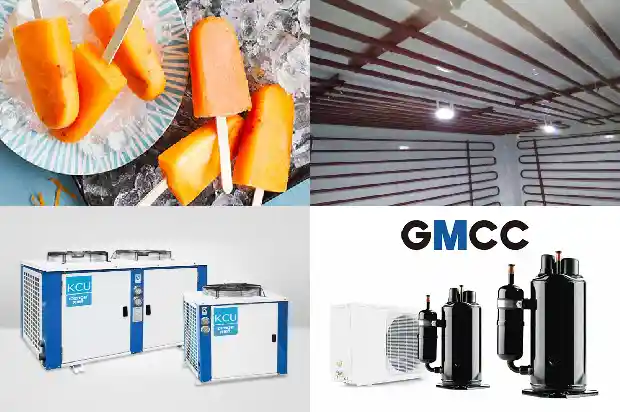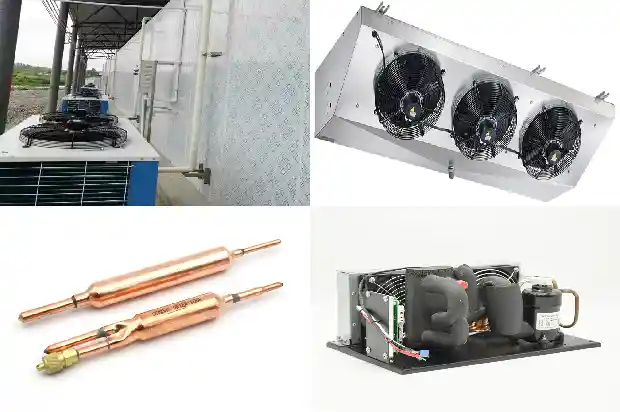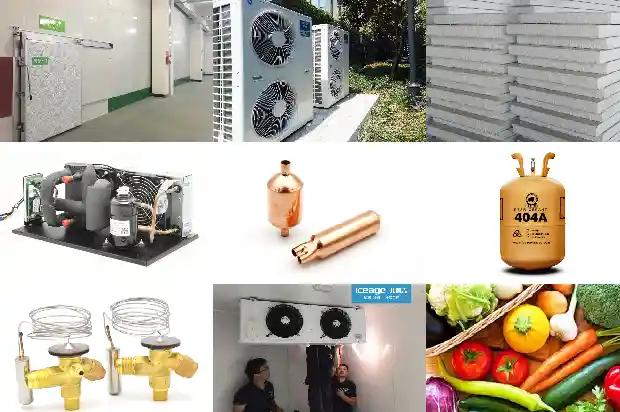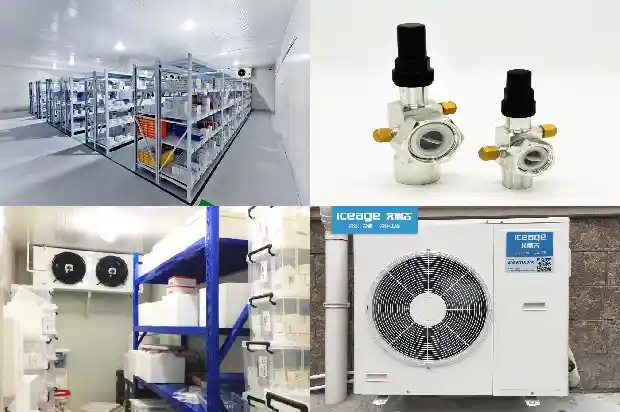Operations and Precautions for Multi - split Air Conditioners: Blowing Debris, Air Tightness, Vacuum Drying, and Refrigerant Charging
2024-12-29
I. Flushing of Copper Tubes
1. Function
Use pressurized gas to wash the pipeline (raw material pipe or welded components) to remove dust inside the pipe (solid impurities cannot be blown out, so pay attention to protection during the construction process) and moisture.
2. Main Purposes of Flushing
- Remove oxide powder or part of the oxide scale in the copper tube.
- Remove dirt and moisture inside the tube.
3. Hazards of Not Flushing
The remaining solid impurities and moisture in the pipeline cannot be effectively removed, which may lead to serious malfunctions such as ice blockage, dirt blockage, and compressor jamming.
The flushing process is as follows:
- Install the pressure regulating valve on the nitrogen cylinder. The gas used must be nitrogen.
- Connect the outlet end of the pressure regulating valve to the inlet on the gas pipe side of the outdoor unit with an inflation tube.
- Plug all the liquid - side copper tube interfaces except the indoor unit A (including the B unit) with blind plugs.
- Open the nitrogen cylinder valve and set the regulating valve to 5kg.


- Check whether nitrogen passes through the liquid pipe on the indoor unit A side.
Specific operation of flushing:
- Hold suitable blocking material against the main gas - side pipe opening of the indoor unit.
- When the pressure increases to a point where it can no longer be resisted, suddenly release the pipe opening and perform multiple flushing operations.
- To check for flushed dirt, loosely place a white cotton cloth at the pipe opening. Occasionally, some moisture may be found, and the pipeline should be thoroughly dried.
Flushing sequence: When the pipeline has been connected into a system, the flushing sequence is from far to near. That is, relative to the main unit, start from the pipe opening at the farthest end and operate in sequence towards the main unit.
II. Purpose and Operation Sequence of Air Tightness Test
Purpose
Find leakage points to ensure that the system is tight and leak - free, and avoid malfunctions caused by refrigerant leakage in the system.
Operation Key Points
Inspect in sections, maintain pressure for the whole system, and pressurize in stages.


Operation Sequence of Air Tightness Test
- Connect the indoor unit piping well, connect the gas pipe and the liquid pipe with a U - shaped pipe and apply pressure simultaneously.
- Connect a copper tube with a gauge - equipped joint to the gas pipe or liquid pipe side for connection with nitrogen.
- Fill nitrogen from the gauge - equipped joint for the air tightness test.
- After the air tightness test is qualified, connect the piping to the outdoor unit well.
Note: Do not connect the outdoor unit during pipeline pressure testing to avoid damage to the valve body.
Operation steps:
- Confirm whether the two valves of the gas pipe and the liquid pipe are in a fully closed state. In addition, since nitrogen may enter the circulation system of the outdoor unit, it is strictly prohibited to apply pressure by connecting the low - pressure ball valve.
- For each refrigerant system, pressure must be applied slowly in sequence from both the gas and liquid pipe sides. It is strictly prohibited to apply pressure from only one side, otherwise it is likely to damage the throttling valve body of the indoor unit.
- The air tightness test must use dry nitrogen as the medium.
The pressurization sectional control diagram is as follows:
For systems using R410A refrigerant, the pressure - holding value in the third stage is 40kg.
For every ±1℃ temperature difference in the ambient temperature, there will be a ±0.1 kg pressure difference.
Correction formula: Actual value = Pressure during pressurization × (Temperature during pressurization - Observation temperature) × 0.1 kg. By comparing the corrected value with the pressurized value, it can be seen whether the pressure has dropped.
For systems using R410A refrigerant, the pressure - holding value in the third stage is 40kg.
For every ±1℃ temperature difference in the ambient temperature, there will be a ±0.1 kg pressure difference.
Correction formula: Actual value = Pressure during pressurization × (Temperature during pressurization - Observation temperature) × 0.1 kg. By comparing the corrected value with the pressurized value, it can be seen whether the pressure has dropped.
III. Purpose of Vacuum Drying
- Remove moisture in the system to prevent ice blockage and copper plating phenomena.
- Remove non - condensable gases (air) in the system to prevent oxidation of system components and fluctuations in system pressure and poor heat transfer during operation.
Selection of Vacuum Pump
- The ultimate vacuum degree of the vacuum pump should reach - 756mmHg or above.
- The exhaust volume of the vacuum pump should reach 4 liters per second or above.
- The accuracy of the vacuum pump should reach 0.02mmHg or above.
- The vacuum pump used for vacuuming in the R410A system must have a check - valve function.
Vacuum Drying
Use a vacuum pump to turn the moisture (liquid) in the pipeline into steam and discharge it outside the pipe, thus drying the inside of the pipe. At a standard atmospheric pressure, the boiling point of water (steam temperature) is 100℃. When a vacuum pump is used to make the pressure inside the pipe close to vacuum, its boiling point drops relatively. When it drops below the outdoor temperature, the moisture in the pipe will be evaporated immediately.
Ordinary vacuum - drying process:
- Vacuum drying (first time): Connect the pressure measuring instrument to the shut - off valves of the liquid pipe and the gas pipe, and operate the vacuum pump for more than 2 hours (the vacuum pump should be below - 756mmHg).
- If the pressure still cannot reach below - 756mmHg after 2 hours of suction, there is moisture or a leakage point in the pipeline system. In this case, continue suction for 1 more hour.
- If the pressure still cannot reach - 756mmHg after 3 hours of suction, check for leakage points.
- Perform the vacuum - pumping operation by suction from both the liquid pipe and the gas pipe at the same time.
- Once it reaches - 756mmHg, leave it for 1 hour. If the vacuum gauge indication does not rise, it is considered qualified.
IV. Additional Refrigerant Filling
The amount of refrigerant to be additionally filled in the multi - connected unit must be calculated according to the relevant technical data in the accessories of the outdoor unit before filling.
It is absolutely not allowed to fill according to operating current, pressure, exhaust temperature, etc. Because different ambient temperatures and piping lengths can have a relatively large impact on the system current, pressure, and exhaust temperature.
Calculate the additional amount of refrigerant according to the connection length and pipe diameter of the liquid pipes of the indoor and outdoor units.
Note: The formulas for additional refrigerant filling in air - conditioning systems of different series and brands may be different. Therefore, it is necessary to follow the additional formulas in the “Installation Data Manual” of each brand's system to avoid errors.
It is absolutely not allowed to fill according to operating current, pressure, exhaust temperature, etc. Because different ambient temperatures and piping lengths can have a relatively large impact on the system current, pressure, and exhaust temperature.
Calculate the additional amount of refrigerant according to the connection length and pipe diameter of the liquid pipes of the indoor and outdoor units.
Note: The formulas for additional refrigerant filling in air - conditioning systems of different series and brands may be different. Therefore, it is necessary to follow the additional formulas in the “Installation Data Manual” of each brand's system to avoid errors.
Related Articles
- Considerations in Selecting Packaged Air Conditioners and Their Heat Recovery Operations
- Experience Sharing on Refrigeration Welding Operations
- Startup and Shutdown Operations of Screw Chiller
- Oil Cooling Methods and Oil Leakage Operations for Screw Compressors
- Precautions for Using Rotary Refrigeration Compressors
- Precautions for Commissioning of Screw Parallel Units
- Four Combustible and Explosive Refrigerants: Precautions When in Use!
- Accident Handling and Precautions for Circulating Water Pumps
- What Precautions Should Be Taken When Using a Fresh - keeping Cold Storage in Summer?
- Precautions for the Installation and Use of Water Flow Switches
- Precautions for the Hot Gas Bypass Valve of Refrigeration Units in Cold Storage
- Precautions for Inspecting Valves in Refrigeration Systems
- Parallel Installation and Precautions for Scroll Compressors
- Installation and Oil Return Precautions for Refrigeration Equipment Pipelines
- Precautions for Replacing Refrigeration Compressor Refrigerant Oil
- Precautions for Cold Storage Design
- Influence of Fin Spacing of Evaporator in Air Cooler on Frost Formation
- Air - side Economizer
